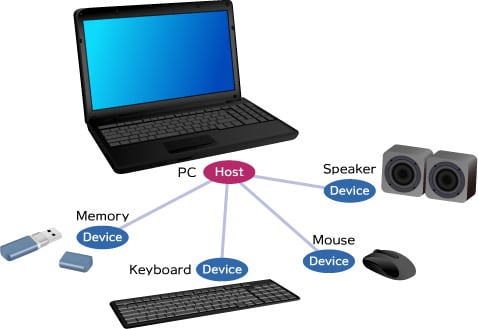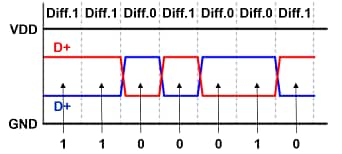-
My ToshibaSemicon
- 반도체 탑
-
애플리케이션Automotive
Body Electronics
xEV
In-Vehicle Infotainment
Advanced Driver-Assistance Systems (ADAS)
Chassis
IndustrialInfrastructure
BEMS/HEMS
Factory Automation
Commercial Equipment
Consumer/PersonalIoT Equipment
Healthcare
Wearable Device
Mobile
Computer Peripherals
-
제품자동차 디바이스
Discrete Semiconductor
다이오드
트랜지스터
로직 IC
Analog Devices
Digital Devices
Wireless Devices
※
: Products list (parametric search)
파워반도체※
: Products list (parametric search)
Isolators/Solid State RelaysPhotocouplers
Digital Isolators
Solid State Relays
Fiber Optic Transmitting Modules
※
: Products list (parametric search)
MOSFETsIGBTs/IEGTs바이폴라 트랜지스터※
: Products list (parametric search)
다이오드※
: Products list (parametric search)
마이크로컨트롤러모터 드라이버 ICIntelligent Power ICs※
: Products list (parametric search)
전원관리IC리니어 IC※
: Products list (parametric search)
범용로직IC리니어 이미지 센서기타 제품용 IC기타 제품용 IC
※
: Products list (parametric search)
-
개발/설계 지원
-
기술 자료
- 구매처
- 부품 번호 & 키워드 검색
- 상호 참조 검색
- 파라미터 검색
- 재고 확인 및 구매
This webpage doesn't work with Internet Explorer. Please use the latest version of Google Chrome, Microsoft Edge, Mozilla Firefox or Safari.
3글자 이상 입력하세요. Search for multiple part numbers fromhere.
The information presented in this cross reference is based on TOSHIBA's selection criteria and should be treated as a suggestion only. Please carefully review the latest versions of all relevant information on the TOSHIBA products, including without limitation data sheets and validate all operating parameters of the TOSHIBA products to ensure that the suggested TOSHIBA products are truly compatible with your design and application.Please note that this cross reference is based on TOSHIBA's estimate of compatibility with other manufacturers' products, based on other manufacturers' published data, at the time the data was collected.TOSHIBA is not responsible for any incorrect or incomplete information. Information is subject to change at any time without notice.
3글자 이상 입력하세요.
USB interface
USB interface is one of the interfaces often found in various devices, such as, USB memories. However, the data transfer mechanism of the USB interface is not well known. This article will provide plain explanation of USB interface, by examining the USB 2.0 overview.
System Using USB
System Using USB
USB is a very popular serial interface especially for PCs. A hierarchical structure is applied to USB interface. One “Host” dominates many “Devices” in the network. For example, a PC is a host, and the devices are apparatuses connected to the PC through USB cables, such as keyboards, mouse devices, printers, flash memories and speakers.

USB has a remarkable feature of plug-and-play. Switching off a PC is unnecessary when USB devices are connected or removed. This is one of the reasons USB has become so popular.
USB Interface in a Microcontroller
USB interface is used by other machines than PCs. The usage would be much simpler than that of a PC. One example is a multi-function printer’s USB interface. Multi-function printers are usually connected to PCs through network and print out the information in the PCs. However, some printers print out photograph data without using PC. In this case, those printers have embedded hosts of USB and control USB memories directly. It is enough for the host to store photograph data or document data from a USB device, and PC’s complicated function is not necessary.
In such usage a microcontroller with an embedded USB host is one of the best solutions for implementation of USB interface on the printer.

Toshiba 32-bit microcontrollers, TX03 series, support USB interface, either USB host interface or USB device. M360 group have either an embedded host or a device of USB 2.0 Full-Speed (12Mbps). M320 group integrate a host and a device of USB 2.0 High-Speed (480Mbps) as well as Full-Speed especially for Audio application.
Those microcontrollers will be introduced later.
Operation of USB
When a USB device is inserted to a USB terminal on a PC, the following operations are performed inside the PC.
The connection of the USB device is immediately detected by the USB host in the PC. Actually, the host is monitoring the connection of USB devices at all USB terminals. Once the host finds a new device, it requests the device to send the device information. The host select an appropriate driver, gives an address, and so on, to the device, which is called “enumeration”. The host can access correctly after the enumeration completion.
When the data in the USB memory (device) is transferred to the hard disc drive in the PC, the host commands the device to send the data to the host. The device transfers the data to the host, and the host returns an acknowledge to the device which shows the operation has completed successfully. On the other hand, when the direction of the pathway is reverse, the host announces its intention to send the data to the device, and transfers it. The device receives the data and return an acknowledge to the host.
When the device is going to be removed from the PC, the device, in some way, tells to the host about it. Then the host cuts off the connection to prepare the removal of the device. After that, the PC shows the sign on the monitor that the USB memory can be disconnected.
You probably know how to connect or disconnect a USB device to/from a PC.
Protocol of USB
USB 2.0 specifies three kinds of transfer rates, Low-Speed (1.5Mbps), Full-Speed (12Mbps), and High-Speed (480Mbps). The USB interface in Toshiba TX03 series microcontrollers mainly are compliant with the Full-speed.
The data formats and types of USB are explained from now as the following. First, the serial data format is introduced. Then, the four types of transfer modes are explained. Finally, the actual wave form in data transfer is described.
Format of USB
- Packet
- Token Packet
- Data Packet
- Handshake Packet
- Transaction
- Frame
Type of Transfer
- Control Type
- Bulk Type
- Interrupt Type
- Isochronous Type
Waveform
Format of USB
Packet
The minimum unit of transfer data of USB is a packet. The packet consists of the SYNC field, a packet ID (PID) field, a field of a variety of data (DATA field), and the CRC (Cyclic Redundancy Check) field.

The SYNC field is 8bit, which synchronizes between the transmitter clock and the receiver one.
The PID field shows what kind of data will be transmitted.
The DATA field contains the actual transferred data.
And the CRC field has an error check code to check if there is no error in the data transfer.
The above figure illustrates a general format of a packet. The actual packet format is shown as follows.
1) Token Packet

The ADR (USB address) and the ENDP (End Pint) are the address of the transmission register or the receiving register of the ‘DATA Packet’.
2) Data Packet

3) Handshake Packet

The handshake packet has SYNC field and PID one, and neither DATA field nor CRC exists.
Transaction
The packets, Token, Data, and Handshake packets have been introduced. A series of transfer data between USB host and device consist of several combinations of these packets. As an example, it is described how the host receives the DATA from the device.
The host begins to transmit a Token packet to the device. The packet includes the register address (ENDP) and the device address (ADR) which the transfer data will come from. And PID contains a data receiving (IN) code.
The device transfers the data from the addressed register (Data Packet).
The host returns an acknowledge (ACK) to the device to receive the data successively (Handshake Packet). This acknowledge is contained in the PID field.
Such combination of Token, Data, and Handshake packets is called a transaction.

Frame
The maximum length unit in USB Full-Speed is “Frame”. One frame time-length is 1ms fixed. The frame starts with SOF (Start of Frame) packet. After the SOF many transactions would follow.


Type of Transfer
USB has four transfer types depending on the data. They are called Control, Bulk, Interrupt, and Isochronous types.
Control Type
This type is used when control data are transferred. When a host does enumeration of a device, the transfer data are divided into many short fragments and transmitted many times. This scheme will make sure each transfer would be successful.
Bulk Type
This type is convenient for transferring a big amount of data, for example, stored data in a USB memory, to a folder in a PC. The DATA field of the data packet should become as long as possible to save time for transfer. While transfer, if an urgent transmission requests its interrupt, the Bulk type transfer can stop and give place to the interrupt.
Interrupt Type
This type is convenient for transferring a big amount of data, for example, stored data in a USB memory, to a folder in a PC. The DATA field of the data packet should become as long as possible to save time for transfer. While transfer, if an urgent transmission requests its interrupt, the Bulk type transfer can stop and give place to the interrupt.
Isochronous Type
This type is used by transfer of real-time data, video clips and music data, as examples. Those data must be transferred seamlessly and fortunately no confirmation of correct arrival of the data. No handshake packet is issued by the receiver.
The most effective type can be selected, depending on what kind of data is transferred.
Signal Waveform
The cable of USB has 4 wires; VDD, GND, signal D+, and signal D-. D+ and D- are complementary values each other for one transferred data. In the case that D+ is high and D- is low, the data is called “Differential 1”. And D+ is low and D- is high, “Differential 0”.
The data format of USB is NRZI (non-return to zero inverted). This format defines data “1” when no change occurs in one clock interval, and data “0”, either high-to-low or low-to-high change occurs.

USB does not have any clock lines. So the Host and the Driver have to synchronize each other. 8 bit SYNC codes are transferred to synchronize a receiver to a transmitter in USB Full-Speed.

